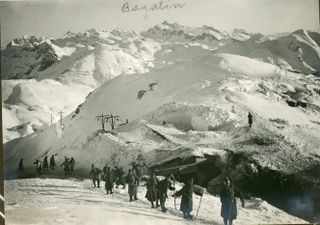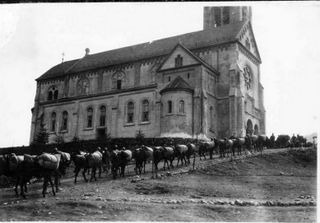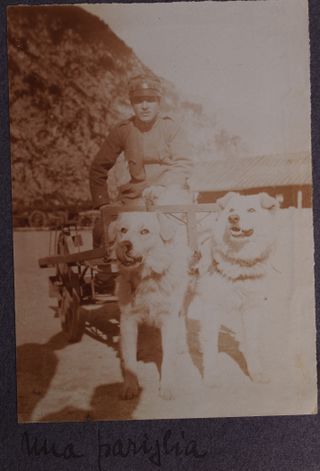Supply lines - arteries of the Isonzo front
21.10.2023 - 15.10.2024Supply lines are among the crucial factors of all wars; nevertheless, this issue is often disregarded. Throughout the history, supply lines have frequently decided on the outcome of not only battles but also entire wars, yet when war is mentioned, one mostly thinks about the fighting of soldiers. All strains of the people suffering in the rear and hinterland, who had to provide supplies for the fighting soldiers, are quite often entirely ignored.
The Italian Front, or the Southwestern Front, differed from the other fronts of the First World War primarily in terms of terrain. While the other front lines mostly ran across lowlands and plains, the Italian front line was mainly extended over extremely demanding, mountainous and high-mountainous terrain. The least demanding section of the Isonzo Front was south of Tolmin, where the front line ran across the hills and plateaus of the Kras/Carso. Before the breakthrough of the Front in the 12th Isonzo Battle and the resulting shift of the front line to the Piave, the soldiers on the Italian Front practically could not have fought on the undemanding, flat terrain. The very terrain not only obstructed large-scale military operations, or made them impossible, but also heavily aggravated the supply of soldiers on the Front. Due to the geographical features of the terrain, specific means of transport and infrastructure for supplying the soldiers on the Italian Front had to be used, which were either unknown on other fronts or were used to a limited extent only. In the presentation and explanation of the supply lines on the Italian Front, the focus will be on the Isonzo Front which represented the most significant part of the entire Southwestern Front. The aim of the current exhibition is to present at least some of the problems which the soldiers on the Isonzo Front had to face on a daily basis in order to keep up the very Front.



